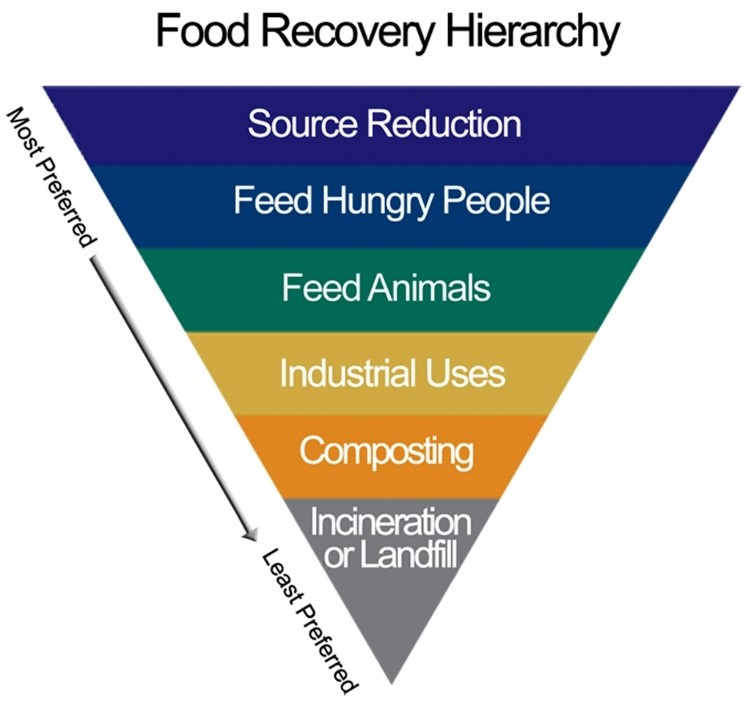The Food Recovery Hierarchy
Understanding the food waste problem begins with recognizing the facts. 30-40% of food produced in America is wasted. This equates to about 130 billion pounds of food going to landfills each year. This means that wholesome, nutritious food which could feed the more than 34 million people in America who are food insecure is never consumed.
What are some ways to reduce food loss and waste?
According to the USDA, the best approach to reducing food loss and waste is to avoid creating it in the first place. Food waste can be avoided by improving development, storage, shopping/ordering, marketing, labeling, and cooking methods. If excess food is unavoidable, recover it and donate it to hunger-relief organizations so that they can feed people in need. Inedible food can be recycled into other products such as animal feed, compost and worm castings, bioenergy, bioplastics, and clothing.
USDA and EPA created the food recovery hierarchy to show the most effective ways to address food waste.

What are some ways that you are working on reducing or recovering food waste?
Find more food waste facts on the USDA’s Food Waste FAQ.
Learn more about HUNGER IN AMERICA ON FEEDING AMERICA’S SITE.